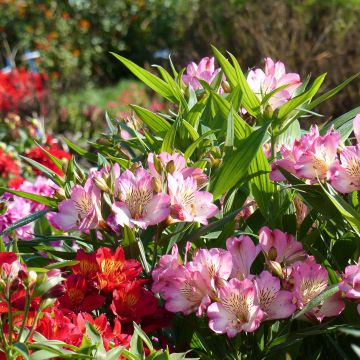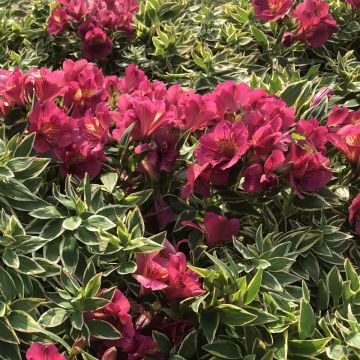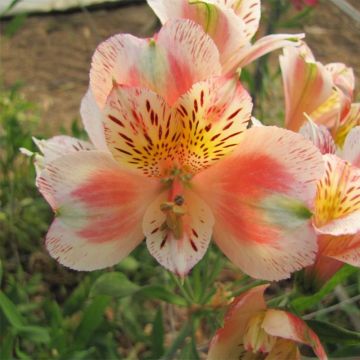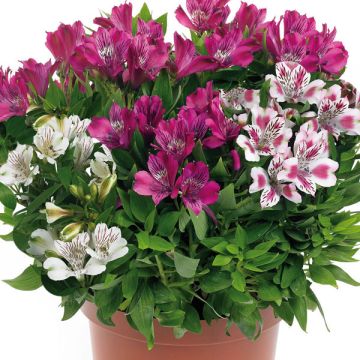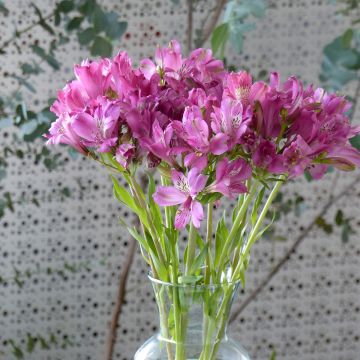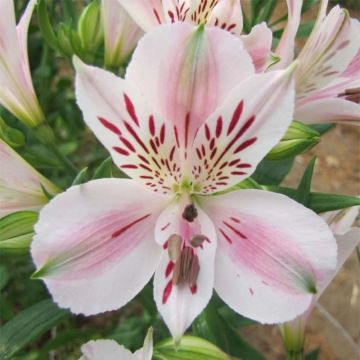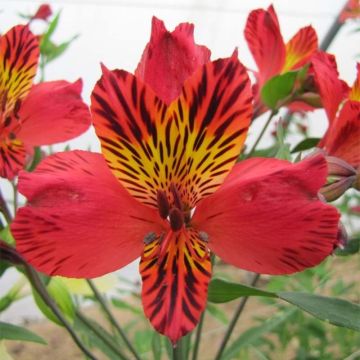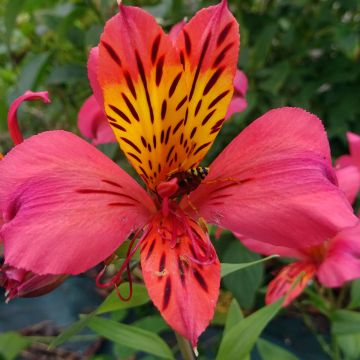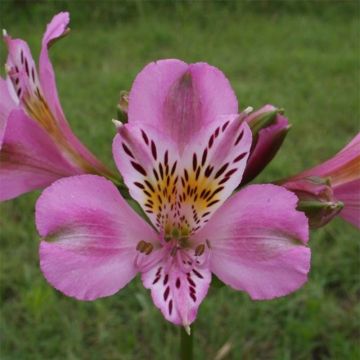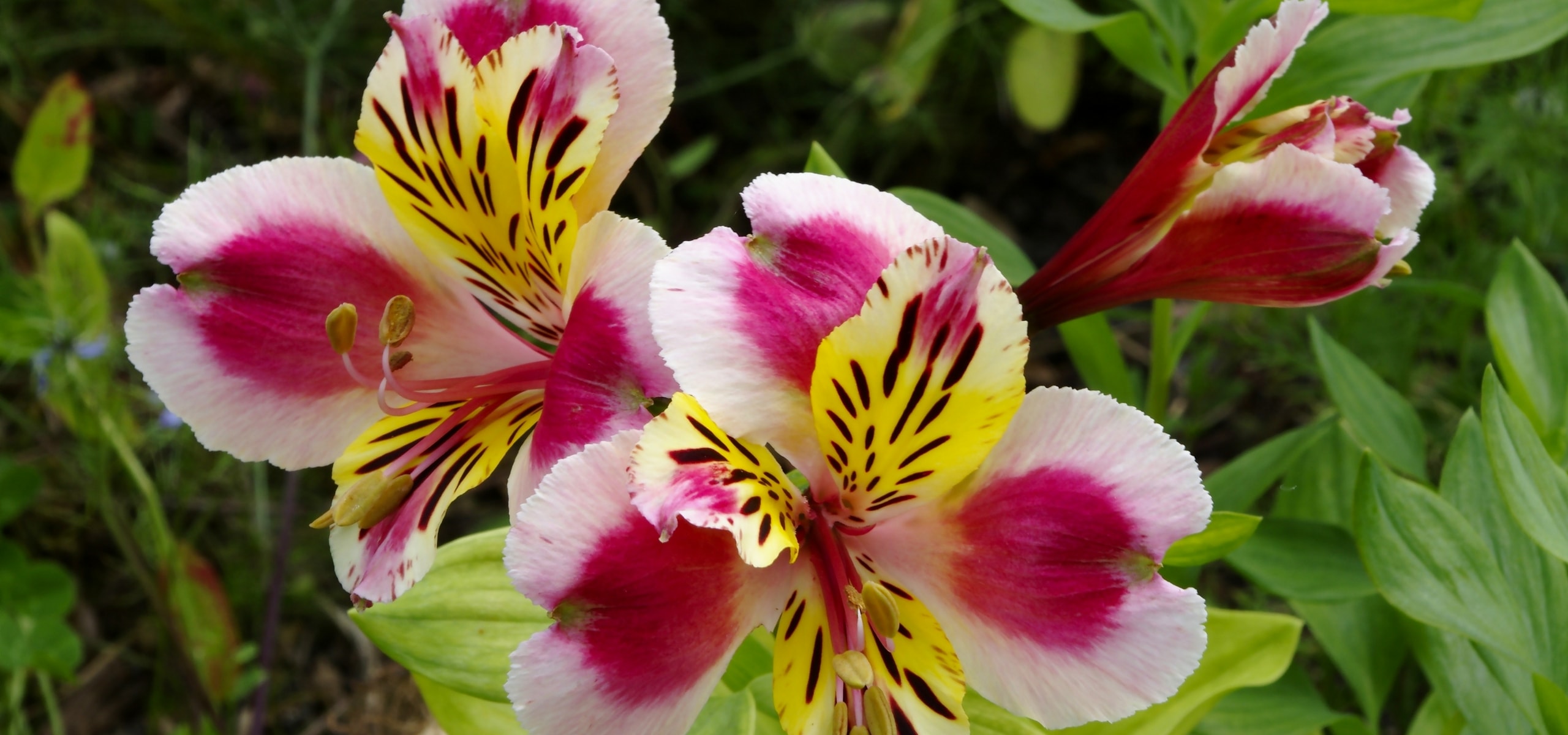
Succeed with your Alstroemeria
Our tips for growing Alstroemeria
Contents
Alstroemerias, also known as Peruvian Lilies, are perennials that provide colourful flowers in an exotic style during summer. Native to South America, they charm with their vibrant flowers, ranging from pink to yellow, including orange and purple. They brighten up gardens and terraces from June until the first frosts. Versatile and relatively easy to grow, they adapt well to both pot and open ground cultivation. Discover all our tips for successful cultivation!
When to plant Alstroemerias?
Alstroemerias are ideally planted in spring, between March and May, when the risk of frost has passed. This period allows the plants to establish themselves gradually before the arrival of the summer heat. In regions with a mild climate, where the risk of frost is low, they can also be planted in autumn, between September and November, when the soil is still warm enough to encourage rooting before winter. Regardless of the chosen season, it is important to avoid periods of frost or extreme heat to prevent stress on the young plants. If planting in spring, ensure regular watering to support recovery, while in autumn, mulching around the base will protect the roots from early frosts.
Where to plant your Inca Lilies?
Inca Lilies are suitable for planting in both borders and beds, provided that a spacing of about 30 cm between each plant is respected. These plants native to South America love full sun but tolerate slight partial shade, especially in regions where summers are particularly hot.
To ensure their flourishing, prefer a location sheltered from strong winds, such as along a south-facing wall or in a protected corner of the garden. This will help recreate conditions similar to their natural habitat and prevent their delicate stems from being damaged. If your soil is heavy or clayey, consider improving drainage by adding gravel or sand, as Alstroemerias are sensitive to excess water.
Do you want to grow them in pots? This is entirely possible, provided you choose a container of at least 20 to 30 cm in diameter to give their fleshy roots enough space. Plant a single Alstroemeria per pot, using quality potting soil that is rich and well-drained. Pots are particularly suitable for balconies, terraces, or small gardens, while also offering the possibility of moving them to safety in case of severe frosts.
Discover other Alstroemerias
View all →Available in 1 sizes
Available in 1 sizes
Available in 1 sizes
Available in 0 sizes
Available in 1 sizes
Available in 1 sizes
Available in 1 sizes
Available in 1 sizes
Available in 1 sizes
Available in 1 sizes
How to plant them?
- Work the soil to a depth of 30 cm to allow for good root development.
- Mix your garden soil with compost to create a rich and light substrate. If your soil is heavy or clayey, add sand, gravel, or a bit of turf to improve drainage. You can also add a base fertiliser, such as ground horn or well-rotted manure, to enrich the soil and nourish this greedy plant.
- Dig a hole about twice the size of the root ball and generously water the bottom to moisten the soil.
- Gently place the root ball in the hole, taking care not to damage the roots, as they are quite fragile, then fill in with the soil and compost mixture, lightly compacting it.
- Water thoroughly after planting to properly settle the soil around the roots.
- Maintain regular watering during the first month to prevent the soil from drying out and ensure the plant establishes well.
Once your alstroemeria is well established, water approximately once a week in summer to support flowering, while avoiding excess water.
We also recommend mulching to retain moisture, limit weeds, and protect the roots from heat.
How to care for Alstroemeria?
Throughout the season, remember to remove faded flowers by cutting them at their base. This step encourages the production of new flowers, allowing for continuous flowering from June to October.
Alstroemeria are not evergreen, meaning they lose their foliage in winter, but they reliably return each spring from their tuberous roots. In autumn, when the foliage begins to yellow, you can cut the stems back to ground level. This helps to tidy the plant and reduce the risk of diseases or pests.
North of the Loire, mulching is essential in autumn to protect the roots from frost, unless your alstroemerias have been planted in a particularly sheltered position. In regions further south, mulching is not necessary. If you have planted your Alstroemerias in pots, bring them under cover at the first signs of cold, after pruning the foliage, and forget about them at the back of an unheated garage or frost-free shed, only giving them a light watering every 6 weeks. Bring your pots back out after the last frosts.
- Subscribe!
- Contents































